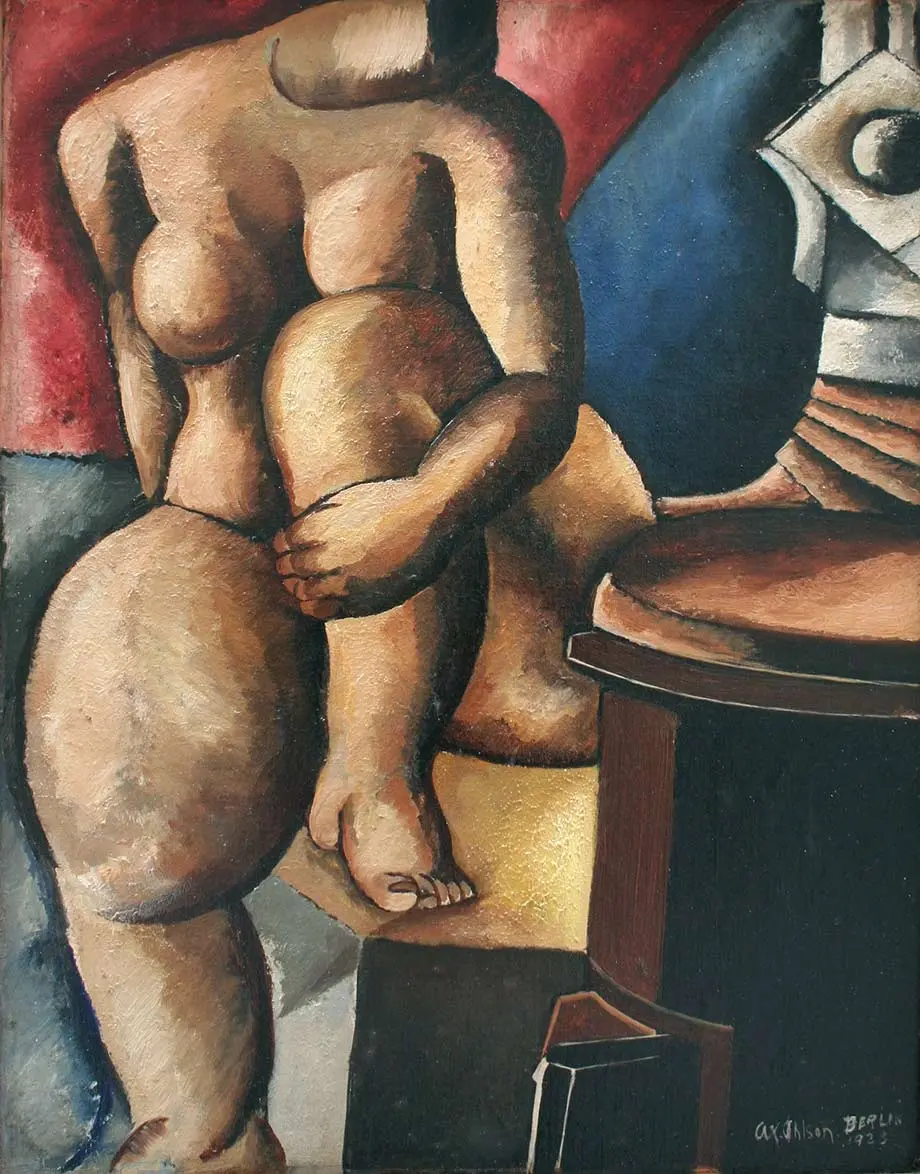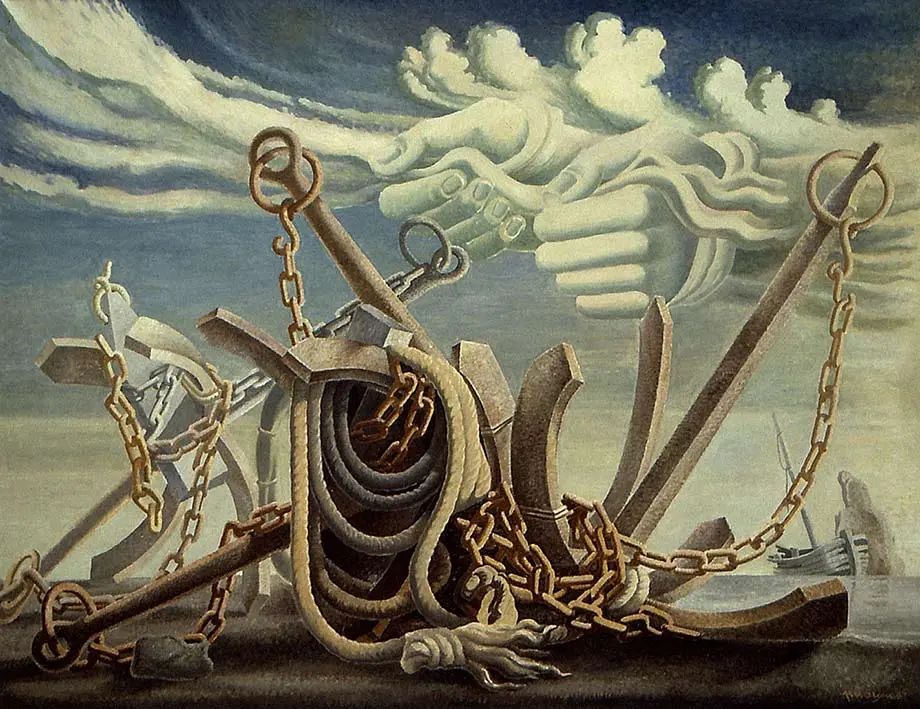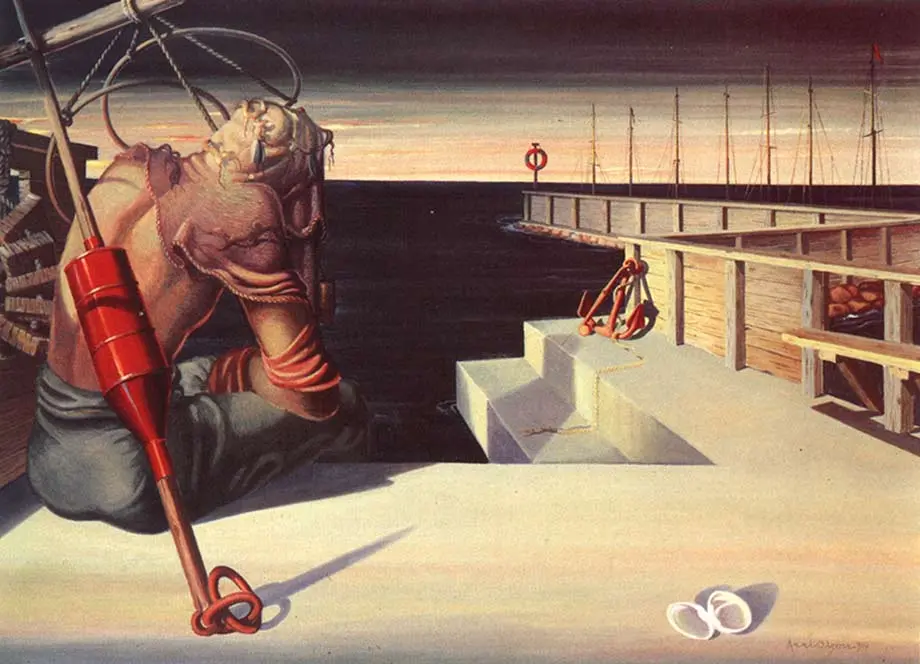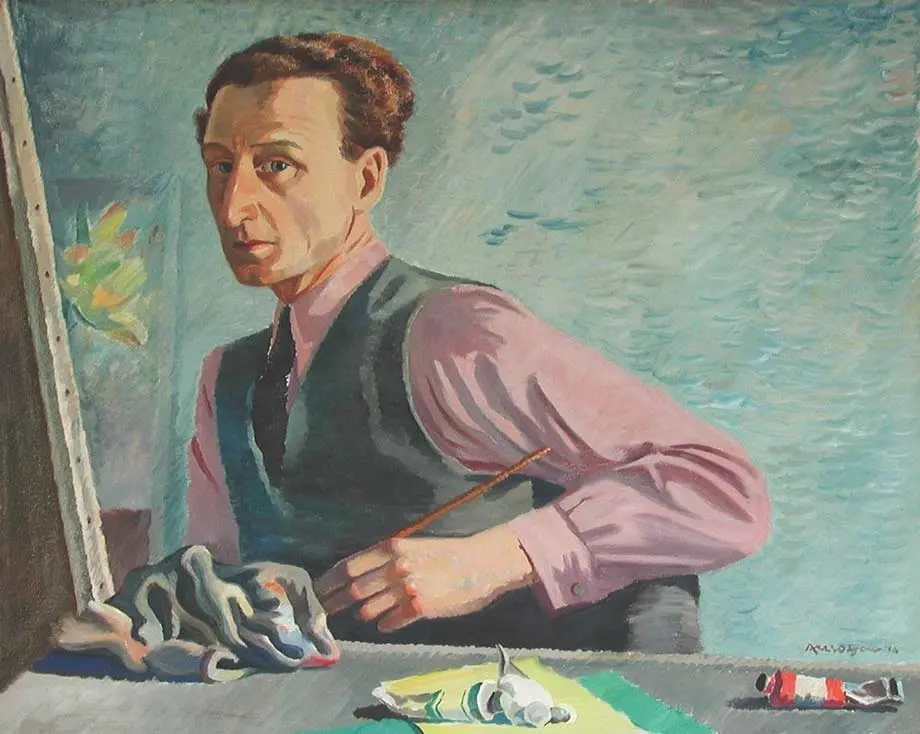Axel Olson
Axel Olson (1899–1986) was one of six artists in the Halmstad Group.
Studies in Italy and Berlin
Axel Olson was born on a farm just outside Halmstad. His father was a sailor who re-schooled as machinist. As a young boy Axel was considered a proficient draftsman, drawing portraits and caricatures. As a teenager he was allowed to attend the Technical Evening School and draw live models.
When he was 16 he establish Gnistan (The Spark) along with his younger brother Erik and their cousin Waldemar Lorentzon. Together the group shows for the first time in Halmstad at an exhibition for amateurs in 1919. Egon Östlund sees the exhibit and subsequently communicates contact with the artist Gösta Adrian- Nilsson (GAN). The sister of the filmmaker Viking Eggeling, becomes A. Olson´s benefactor, giving him the opportunity to travel to Italy and Germany to paint in 1922.In 1923 A. Olson moves to Berlin and studies for Alexander Archipenko, Russian sculptor and painter. Here Axel comes in contact with the continental avantgarde; Der Sturm, Italian futurism, Russian constructivism and French cubism. He sees exhibitions with Picasso, Léger, Kurt Schwitters, and others.

Axel Olson, "Dynamisk figur", 1923
Back in Halmstad
In the autumn of 1923 Axel Olson is back in Halmstad and becomes a teacher for the group De Unga (The Young) among whose members are Sven Jonson and Esaias Thorén. In parallel he works during the twenties with advertising to make a living. In the spring of 1929 Lorentzon get a commission to decorate Skavböke chapel, assisted by Axel Olson. The biblical scenes they paint in the chapel show trends typical of the avant-garde of the 20´s. Towards the end of August 1929 A. Olson establishes the Halmstad Group with Erik Olson, Waldemar Lorentzon, Sven Jonson, Esaias Thorén and Stellan Mörner.
The surrealism
During this period, A. Olson´s art is characterised by post cubistic features tending towards surrealism. The Halmstad Group participates in the exhibition Kubisme=Surrealisme in Copenhagen in 1935. That year Axel Olson paints Förankring i verkligheten (Connection to Reality) – a painting inspired by Salvador Dalí.

Axel Olson, "Förankring i verkligheten", 1935
A. Olson finds his surrealistic subject matter in his daily surroundings, often with the plough and anchor as recurring symbols. At the start of WWII in 1939, Axel visits his brother Erik near Copenhagen. Here, A. Olson paints the work Hamn (Harbour) which reflects the dark mindset of the times. In 1940 he does his military service and that year paints Svart kväll (Black Evening) where German bombers have been exchanged for flying monsters. During the forties, along with Sven X:et Erixson, Felix Hatz, members of the Halmstad Group and others, he participates in the Söndrum Colony, a group of artists, poets and writers gathering at the coast outside Halmstad.

Axel Olson, "Hamn", 1939
1950s, 60s and 70s
In 1948 Axel Olson travels to Paris for the first time; he stays for two months. The contact with the French non figurative art movement leaves traces in his paintings and after a trip to Provence in the early fifties, his colours lighten. During the 60´s A. Olson returns to a more surrealist imagery with dramatic scenes and more muted colour tones. In 1973 he develops cataracts and is threatened with blindness. After an operation that restores his sight, he paints Ögat (The Eye) 1974. During the 70´s and 80´s he continues using the features of Halland´s coast as inspiration. Common subjects are boats, fishing tackle, mussels, and sea shells. Axel Olson passes away in 1986.

Axel Olson, self portrait, 1946
